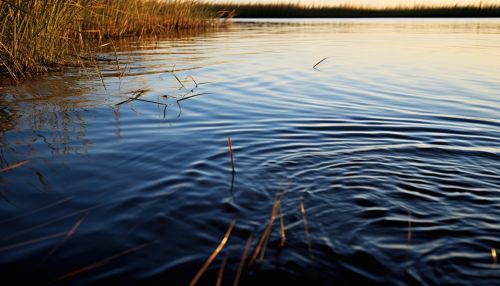Surface wave
Introduction
Surface waves are a type of seismic wave that travels along the Earth's surface. They are produced by earthquakes, volcanic activity, and other seismic sources. Surface waves are slower than other types of seismic waves and are responsible for most of the damage associated with earthquakes.


Types of Surface Waves
There are two fundamental types of surface waves: Love waves and Rayleigh waves.
Love Waves
Love waves, named after the British mathematician A.E.H. Love, are horizontally polarized shear waves (SH waves). These waves move the ground from side-to-side in a horizontal plane perpendicular to the direction of propagation. Love waves are dispersive, meaning that different frequencies have different velocities. They are the fastest surface waves and can be easily identified on a seismogram due to their high amplitude and transverse nature.
Rayleigh Waves
Rayleigh waves, named after Lord Rayleigh who predicted their existence, are a type of surface acoustic wave that travels along the surface of solids. These waves induce an elliptical motion in the particles of the medium, with the major axis of the ellipse being vertical. Rayleigh waves are slower than Love waves and are responsible for the rolling motion felt during an earthquake.
Generation of Surface Waves
Surface waves are generated when the body waves (P and S waves) interact with the surface of the Earth. The interaction of P waves with the surface generates Rayleigh waves, while the interaction of S waves generates Love waves. The amplitude of surface waves decreases with depth, which is why they are confined to the surface of the Earth.
Propagation of Surface Waves
The propagation of surface waves is influenced by the properties of the Earth's crust and upper mantle. The velocity of surface waves depends on the elastic properties and density of the medium through which they travel. Surface waves are dispersive, meaning that their velocity depends on their frequency. Lower frequency waves travel at slower velocities than higher frequency waves.
Effects of Surface Waves
Surface waves cause most of the shaking and damage associated with earthquakes. They are responsible for the rolling and swaying motions felt during an earthquake. Surface waves can also cause landslides and other types of ground failure. The amplitude and frequency of surface waves can be used to determine the magnitude and location of the earthquake that generated them.
Measurement of Surface Waves
Surface waves are measured using seismometers. The amplitude and frequency of surface waves can be used to determine the properties of the Earth's crust and upper mantle. This information is used in the field of seismology to study the structure and composition of the Earth's interior.
Applications of Surface Waves
Surface waves have a number of applications in the fields of seismology, geophysics, and earthquake engineering. They are used in seismic tomography to image the Earth's interior. They are also used in the design of buildings and other structures to ensure they can withstand the effects of earthquakes.
